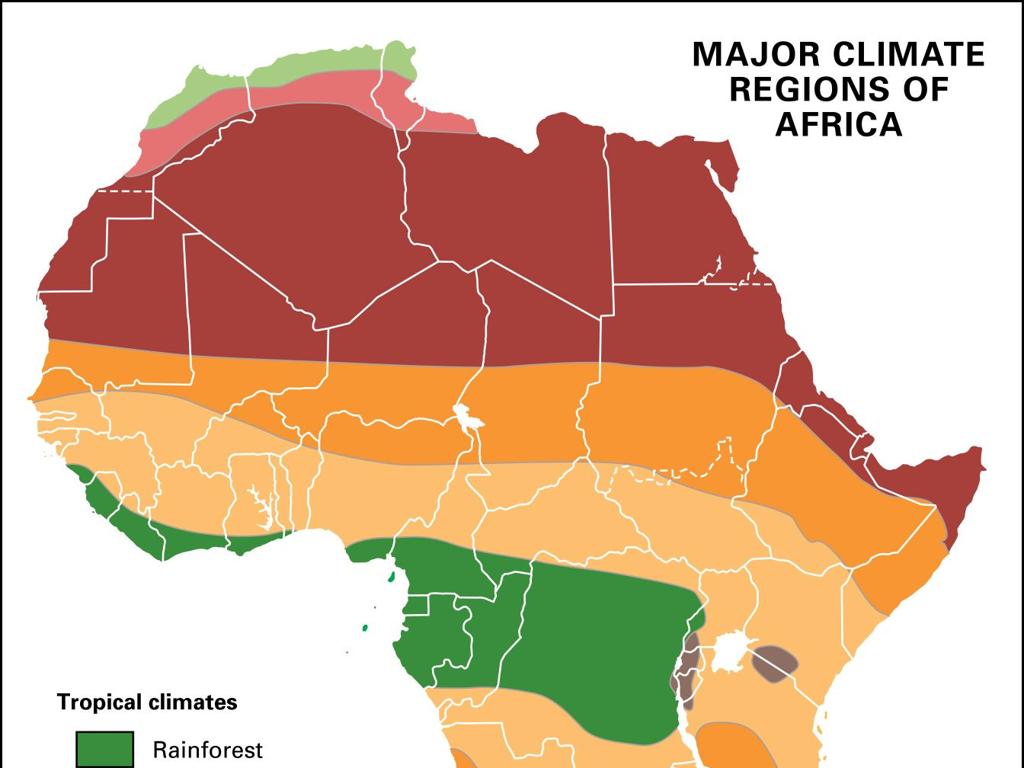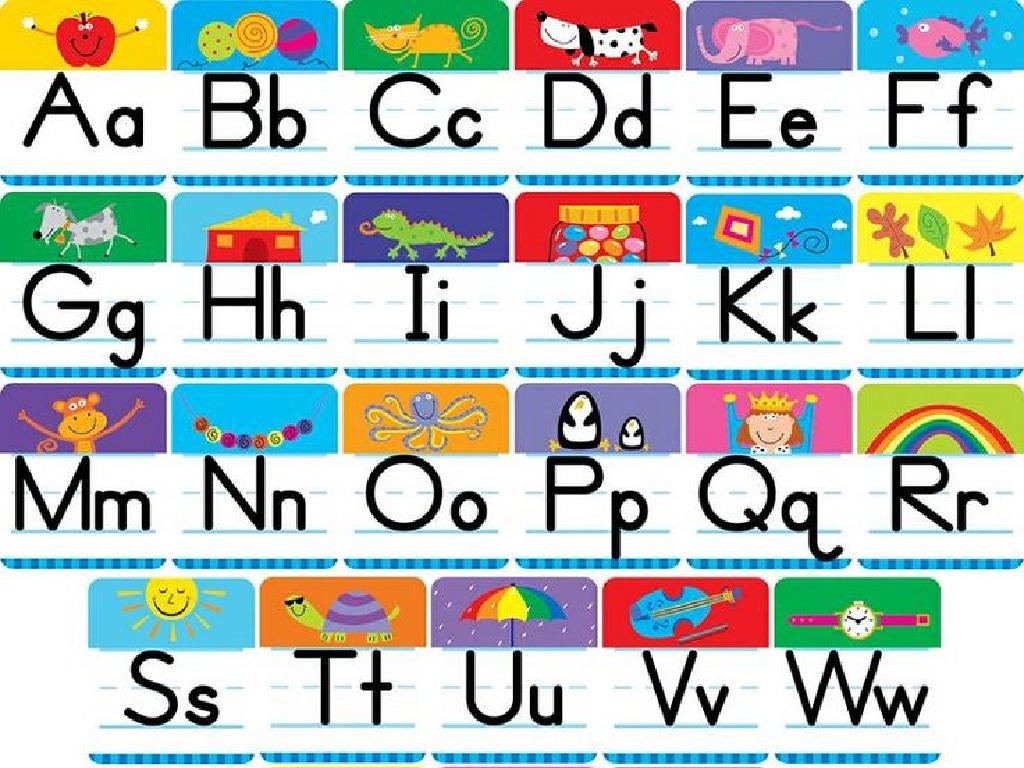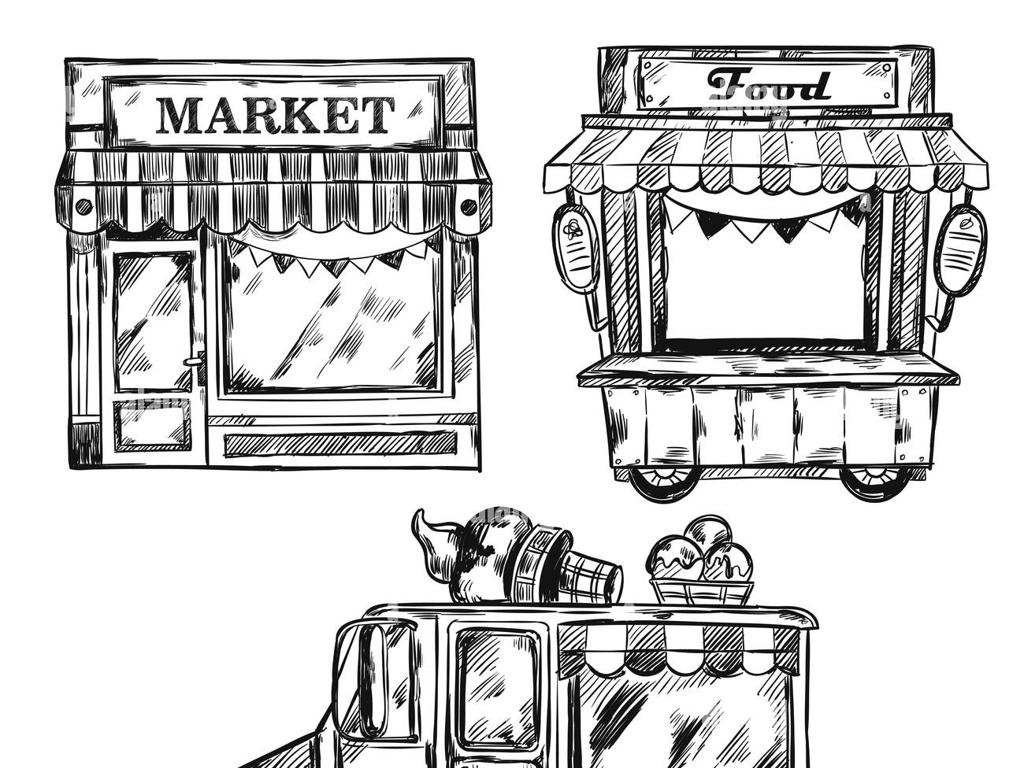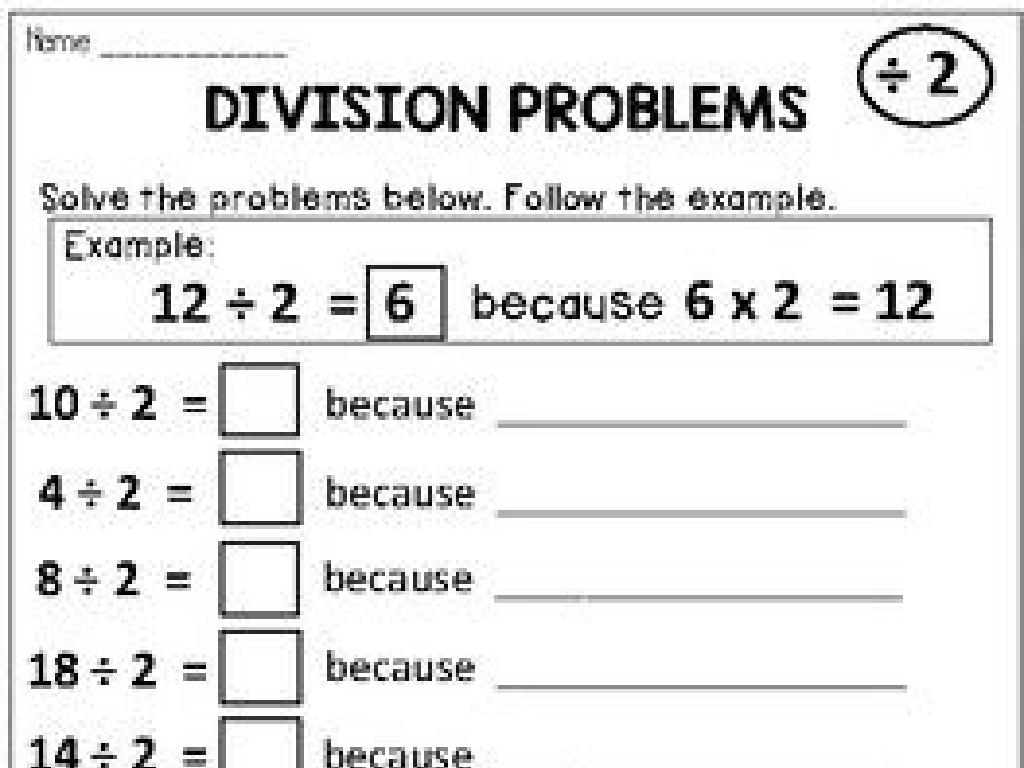Squares Up To 10 X 10
Subject: Math
Grade: Third grade
Topic: Multiplication Fluency Up To 10
Please LOG IN to download the presentation. Access is available to registered users only.
View More Content
Today’s Adventure: Squares up to 10 x 10!
– Multiplication makes groups
– Imagine 3 groups of 4 apples. That’s 3×4!
– Squares are special products
– When you multiply a number by itself, like 5×5, that’s a square!
– Squares up to 10 x 10
– Practice squares from 1×1 to 10×10 to see patterns.
– Squares give you superpowers
– Knowing squares helps in math puzzles and faster calculations!
|
This slide introduces the concept of multiplication as creating groups of equal size and focuses on the special case of squares, where a number is multiplied by itself. Emphasize that understanding squares is like having a math superpower because it makes solving problems faster and easier. Encourage students to memorize squares up to 10×10 to help them with more advanced math concepts. Provide examples of squares and show how they form patterns, which can be a fun discovery for the students. In the next class, have students share their favorite square numbers and explain why they think knowing squares is powerful.
Understanding Multiplication
– Multiplication: Repeated addition
– It’s like adding the same number over and over!
– Example: 3 x 4 as addition
– 3 x 4 means 3 + 3 + 3 + 3
– Using arrays for multiplication
– Arrays show rows and columns of objects
– Practice with squares up to 10×10
– Squares are special: 5×5 is 5 added 5 times!
|
This slide introduces the concept of multiplication to third graders by relating it to the more familiar operation of addition. Start by explaining that multiplication is a shortcut for adding the same number multiple times. Use the example 3 x 4 to show that it’s the same as adding 3 four times. Introduce arrays as a visual tool to represent multiplication, with rows and columns corresponding to the numbers being multiplied. Emphasize the concept of squares, such as 5×5, to help students visualize and understand multiplication as an area. Encourage students to draw their own arrays and identify the repeated addition within them. This will build a foundation for multiplication fluency up to 10×10.
Squares in Multiplication
– What are square numbers?
– Square numbers are special in math!
– Multiplying a number by itself
– Like 4×4 is 4 squared, which equals 16
– Examples of square numbers
– 1×1=1, 2×2=4, 3×3=9, up to 10×10=100
– Practice finding squares
|
This slide introduces the concept of square numbers to third-grade students. Begin by explaining that square numbers are the result of multiplying a number by itself. Use visual aids like arrays or area models to show this visually. Provide clear examples starting from 1×1 up to 10×10. Encourage students to memorize these squares as they are foundational in math. For practice, have students create a list of square numbers up to 10×10 and use objects like tiles or counters to arrange them into square shapes, reinforcing the concept.
Discovering Patterns with Square Numbers
– Square numbers grow bigger
– 1×1=1, 2×2=4, 3×3=9, see the change?
– Patterns in square numbers
– Each time, we’re multiplying a number by itself
– Activity: Find missing squares
– Share your patterns in class
– Did you find a pattern? Let’s discuss it!
|
This slide introduces students to the concept of square numbers and the patterns they form. Start by explaining that square numbers are the result of multiplying a number by itself. Show them the sequence of square numbers and point out the increasing pattern. For the activity, provide a sequence with missing square numbers for students to fill in, such as 1, _, 9, _, 25, and so on. Encourage them to look for and describe the pattern they see in how square numbers increase. After the activity, have a discussion in class where students can share the patterns they discovered and explain how they found the missing numbers. This will help reinforce their understanding of multiplication and square numbers.
Multiplication Fluency: Squares Practice
– Use a chart to find squares
– A multiplication chart helps us see patterns and find square numbers easily.
– Memorize squares with tips
– Tricks like rhymes can help remember squares. For example, 5×5 is 25, like ‘high five, let’s stay alive!’
– Practice finding squares
– Look for numbers like 1×1, 2×2, up to 10×10 on your chart.
– Highlight squares on the chart
– Use a color to mark 1, 4, 9, 16, …, 100 on the chart.
|
This slide is designed to help students practice multiplication fluency with a focus on square numbers. Begin by explaining how a multiplication chart works and how it can be used to easily identify square numbers. Share tips and tricks for memorizing squares, such as catchy rhymes or patterns. Then, engage the students in a hands-on activity where they find and highlight square numbers on their multiplication chart. This will help them recognize patterns and reinforce their understanding of squares. Encourage students to work together and assist each other, fostering a collaborative learning environment.
Fun with Square Numbers!
– Play ‘I Spy a Square Number’
– Challenge: List most squares
– Who can name the most in 60 seconds?
– Recognize square numbers
– Numbers like 1, 4, 9, up to 100
– Share and learn with friends
– Discuss the squares you found
|
This slide introduces a fun and interactive game to help students recognize and memorize square numbers up to 10 x 10. The game ‘I Spy with My Little Eye’ encourages students to find and call out square numbers they know. The challenge is a timed activity where students race to list as many square numbers as they can in one minute, promoting a friendly competition. Encourage students to think of square numbers as numbers that have an equal number of groups and items in each group (e.g., 3 x 3 is a square number because it’s 3 groups of 3). After the activities, facilitate a discussion where students can share the square numbers they found and how they recognized them. This will reinforce their understanding and help them learn from each other.
Real-Life Application of Square Numbers
– Square numbers in daily life
– Example: Tiling a floor
– A 10×10 floor would need 100 tiles
– Example: Building with blocks
– Using 36 blocks to make a 6×6 square
– Discuss your square number sightings
|
This slide aims to help students recognize the concept of square numbers in everyday contexts, enhancing their understanding of multiplication and area. Square numbers are not just a mathematical concept but are also applicable in real-world scenarios such as tiling a floor or constructing with building blocks. For instance, if one were to tile a 10×10 square floor, it would require 100 square tiles, demonstrating the square of 10. Similarly, building a perfect square structure with blocks, like a 6×6 square, would require 36 blocks. Encourage students to share their own experiences where they have encountered square numbers, whether in games, at home, or in community structures, to foster a practical connection with the concept.
Class Activity: Creating Square Art!
– Learn square numbers through art
– Get grid paper for your square art
– Color squares to make patterns
– Use colors to fill in squares like 2×2, 3×3, up to 10×10
– Share your art and explain
– Tell us about the patterns and square numbers you used
|
This activity is designed to help students visualize and understand square numbers in a fun and creative way. Provide each student with grid paper and coloring materials. Instruct them to color in squares to represent square numbers (e.g., a 3×3 square for the number 9). Encourage creativity in how they arrange and color these squares to form patterns. Once completed, have each student present their square art to the class, explaining the square numbers they used and the patterns they created. This will reinforce their understanding of squares up to 10×10 and allow them to practice multiplication fluency in an engaging manner. Possible variations for different students could include creating symmetrical patterns, using only odd or even squares, or challenging them to find as many square number patterns as possible.
Review and Reflect: Square Numbers
– Recap: What are square numbers?
– Square numbers result from multiplying a number by itself.
– Discover: Where are squares used?
– Think of floor tiles or game boards.
– Quick Quiz: Calculate 7×7 and 5×5
– Test your knowledge with these examples.
– Share: Discuss your answers
|
Today’s lesson focused on understanding square numbers, which are the product of a number multiplied by itself. Encourage students to reflect on this concept and identify square numbers up to 10×10. Ask them to think creatively about where they might see square numbers in real life, such as in the arrangement of objects or in certain patterns. The quick quiz serves as a check for understanding, allowing students to demonstrate their ability to calculate square numbers. After the quiz, facilitate a discussion where students can share their answers and thoughts on the real-world applications of square numbers. This will help solidify their understanding and see the relevance of square numbers in everyday life.
Homework Challenge: Square Numbers
– Complete square numbers worksheet
– Understand squares up to 10×10
– Squares are products of a number multiplied by itself, e.g., 3×3=9
– Find real-life square numbers
– Look for items like tiles or windows arranged in squares
– Share your square number finds
– Bring a photo or the item itself to discuss how you found it
|
This homework is aimed at reinforcing the concept of square numbers through practice and real-life application. The worksheet will provide structured practice on calculating squares up to 10×10, which is essential for building multiplication fluency. Encourage students to explore their surroundings at home to find square numbers, which will help them understand the concept’s practical relevance. This activity will also stimulate their creativity and observational skills. In the next class, create a gallery of the items students found to foster a discussion on how square numbers appear in everyday life and to celebrate their efforts.






